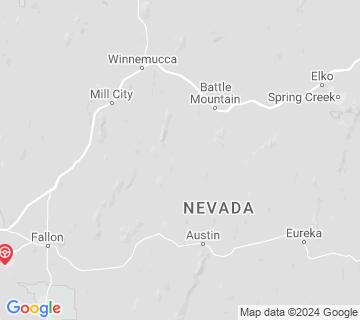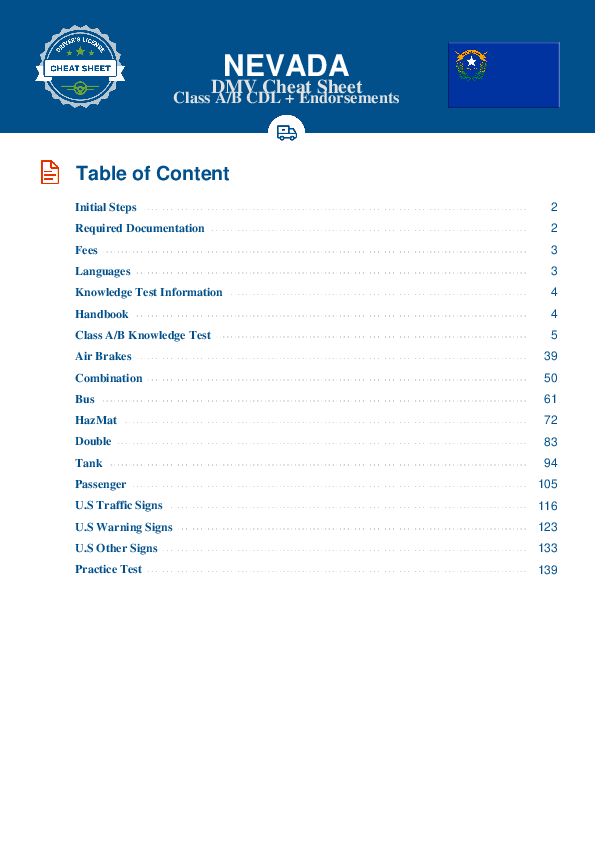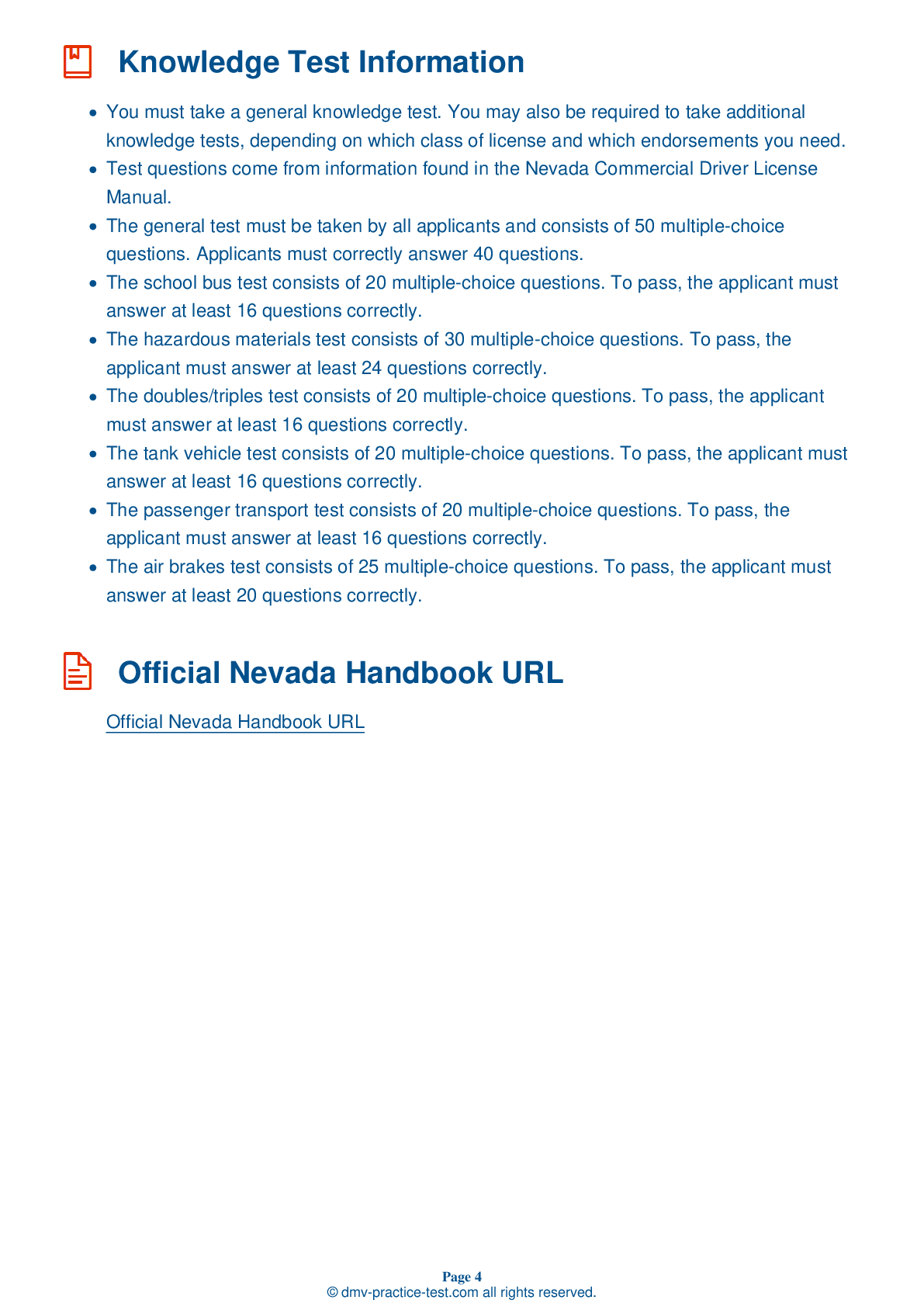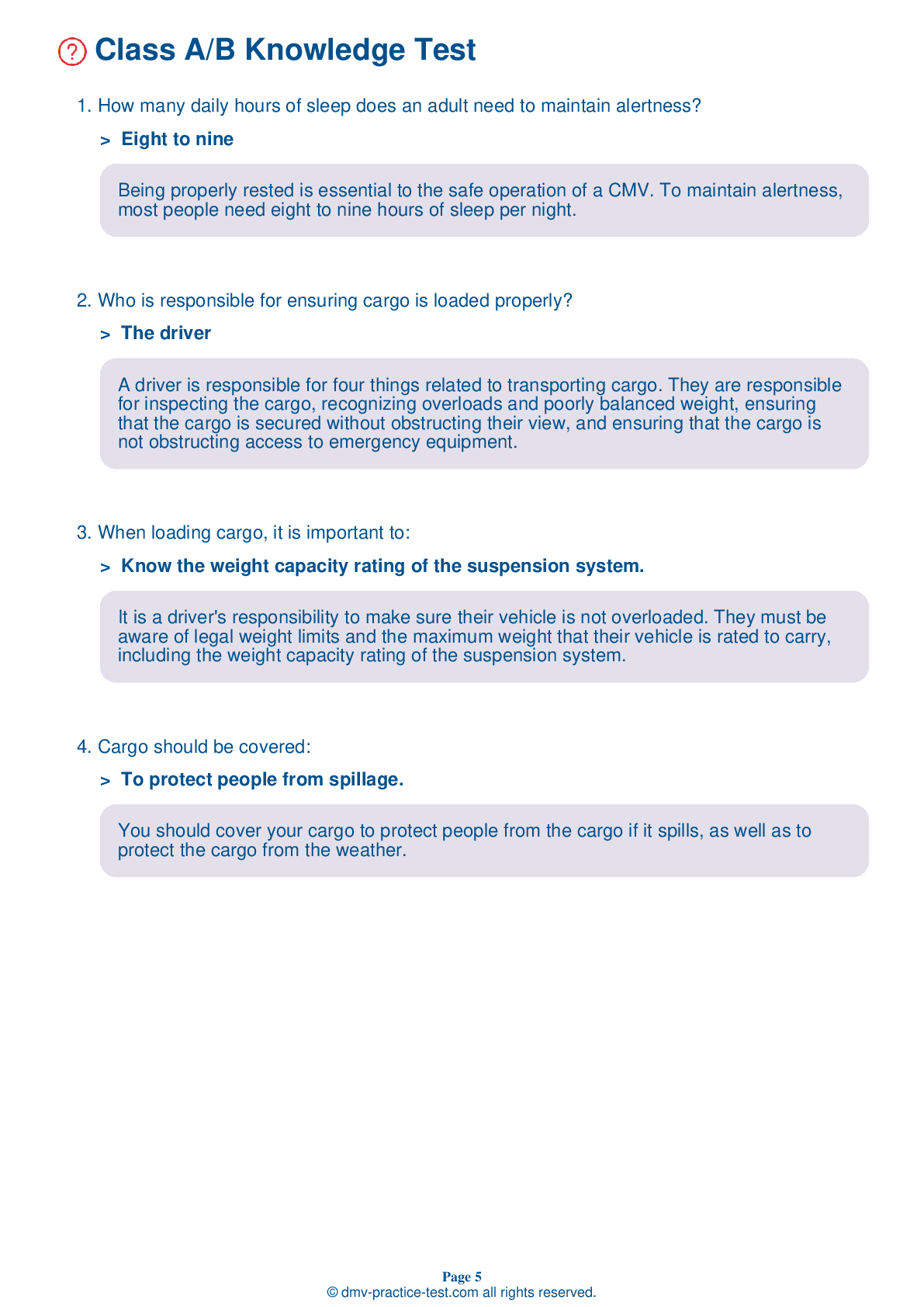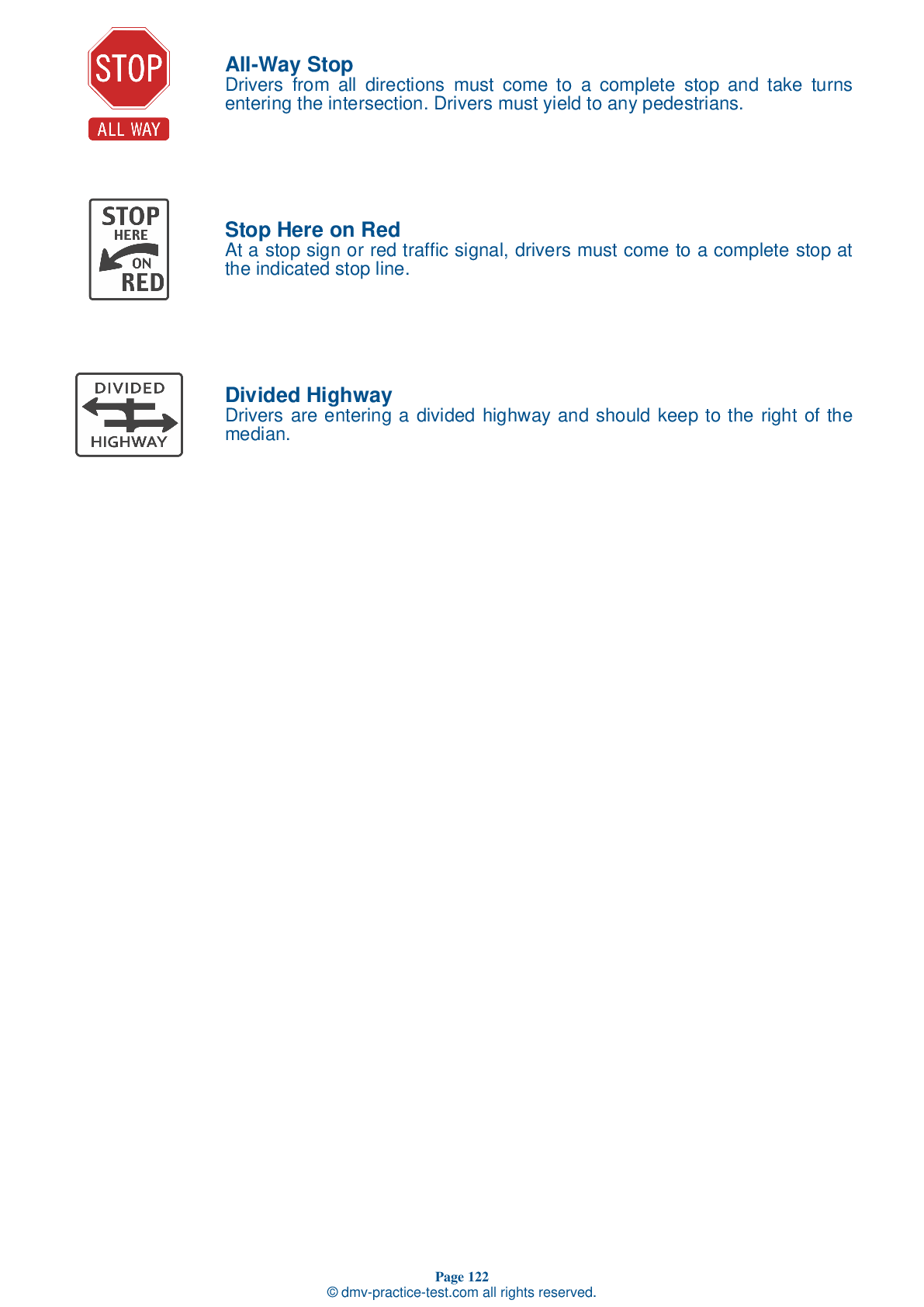Double #1
Double Triple Test | Nevada 2025 #1 Page 3 of 3
Train for FREE with our Nevada CDL double triple practice test online. The official exam test consists of several obligatory parts, with all of them checking your knowledge of different blocks of road rules. If you need to obtain a NV CDL double triple license in 2025, practice as much as possible. Free sample tests published on our website will help you check and improve your knowledge and boost your grades. Please bear in mind that DMV requirements may vary from state to state.
20
16
20
15 . When placing more than one semi-trailer behind a tractor:
The semi-trailer carrying the most boxes should be in the rear.
For safest handling, the lightest trailer in a multiple-trailer combination should be positioned in the rear.
16 . When backing, it is best to:
Use a helper, if possible.
If you must drive in reverse, you should back up slowly and use the mirrors on both sides of your vehicle. Use a helper to monitor your blind spots whenever possible. You and the helper should agree on a signal for "stop."
17 . How can you tell if a converter dolly has anti-lock brakes?
There will be a blue light on the side of the dolly.
A converter dolly equipped with an Anti-Lock Braking System (ABS) is required to have a yellow lamp on its left side.
18 . What causes the "crack-the-whip" effect?
Good driving
Vehicles with trailers are vulnerable to rollover due to the "crack-the-whip" effect, which is caused by rearward amplification. Rearward amplification varies from vehicle to vehicle, so it is important that drivers are aware of the rearward amplification of their specific vehicles.
19 . What helps prevent wheel lockup when braking?
The purpose of an Anti-Lock Braking System (ABS) is to prevent wheel lockup while brakes are being applied.
20 . If a truck is equipped, a trailer brake hand valve can be used to:
Load cargo.
